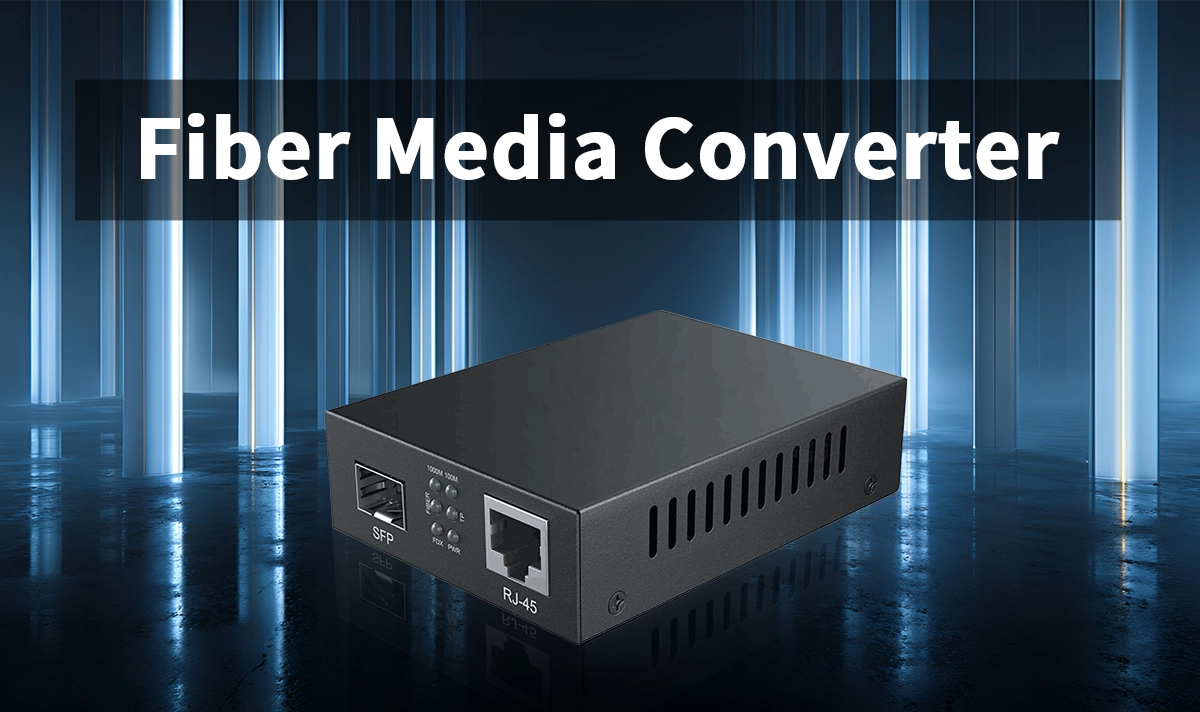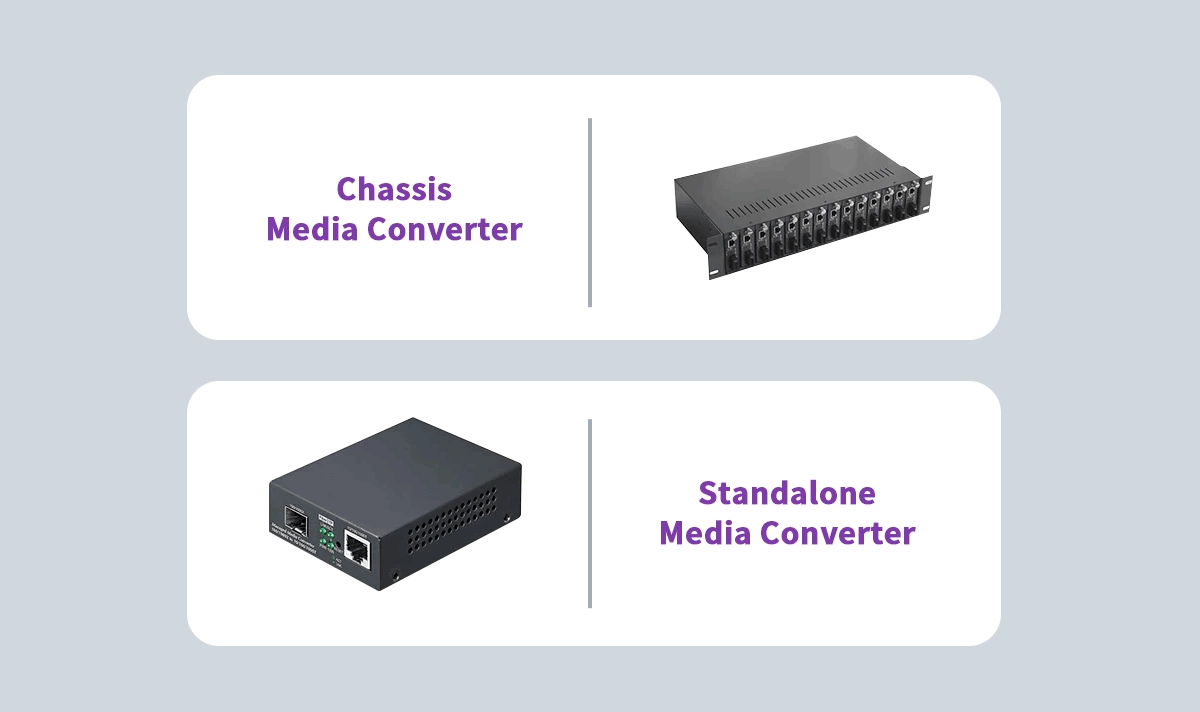
Media converters let you join different cables in a network. You use a media converter to switch signals from copper to fiber or between fiber cables. A media converter overview shows these devices keep your network strong and steady. Media converters work with fibre and fiber connections in many places. You can find types of media converters for copper to fiber and fiber to fiber links. Media converters help your network stay flexible and work well.
Media converters work with fibre and fiber connections, so you can grow your network easily.
💡 What is a Media Converter?
A Fiber Media Converter is a versatile networking device that transparently connects two dissimilar media types—typically twisted-pair copper cable (like Cat6/Cat7 carrying Ethernet) with fiber optic cable. It acts as a translator, ensuring smooth data transmission between a copper-based local area network (LAN) and the high-speed, high-bandwidth fiber backbone.
Without media converters, organizations would face significant challenges and costs in upgrading entire networks to fiber optics all at once. They are the perfect cost-effective solution for network migration and extension.
💡 Why Use a Media Converter? The Key Benefits
Extended Distance: Copper Ethernet (like 10/100/1000BASE-T) is limited to 100 meters. Fiber optics can transmit data for kilometers without signal degradation. Media converters bridge this gap.
Enhanced Immunity: Fiber is immune to Electromagnetic Interference (EMI) and Radio-Frequency Interference (RFI), making it ideal for harsh industrial environments.
Increased Bandwidth & Future-Proofing: They allow you to leverage the high bandwidth of fiber to support demanding applications like HD video streaming and large data transfers.
Cost Savings: Protect your investment in existing copper-based equipment while gradually adopting fiber technology.
💡 Types of Media Converters: Choosing the Right One

Media converters come in various forms to suit different needs. Here’s a quick breakdown:
Feature | Standalone / Desktop Converter | Chassis / Managed Converter |
|---|---|---|
Best For | Small businesses, point-to-point links | Data centers, large enterprises |
Port Density | Low (1-2 conversions) | High (modular, 4-16+ slots) |
Management | Unmanaged / Simple Web | Fully Managed (SNMP, VLAN, QoS) |
Scalability | Low | High |
Use Case | Connecting two buildings | Centralized network aggregation |
Other important types include PoE Media Converters (which transmit both data and power to devices like IP cameras over fiber) and models supporting different fiber modes (Single-mode vs. Multi-mode).
💡 How to Select the Best Fiber Media Converter for Your Needs
Choosing the right converter depends on several factors. Ask yourself these questions:
What speed do I need? (Fast Ethernet 100Mbps, Gigabit 1Gbps, 10 Gigabit?)
What fiber type am I using? (Single-mode (SMF) for long-range or Multi-mode (MMF) for short-range?)
What connector type is on my fiber? (SFP, SFP+, SFP28, or fixed port?)
Do I need management features? (For monitoring and configuring the network remotely)
What is the operating environment? (Standard office or rugged industrial setting?)
For optimal performance and compatibility, always ensure your converter is paired with high-quality optical transceivers. This is where a trusted brand like LINK-PP excels, providing perfectly matched converters and compatible SFP modules for a hassle-free experience.
For instance, a popular solution for a Gigabit link over long distances is a standalone media converter paired with a LINK-PP SFP-1G-LX transceiver module for single-mode fiber.
💡 LINK-PP: Your Partner in Network Connectivity
At LINK-PP, we understand the critical role of reliable connectivity. Our range of industrial-grade media converters and high-performance compatible optical transceivers are engineered for durability and seamless integration. Whether you're looking for a managed media converter for granular control or a simple unmanaged Ethernet to fiber converter for a basic link, we have a solution.
LINK-PP
specialize in providing cost-effective fiber optic solutions
💡 FAQ
What does a media converter do?
A media converter lets different cables talk to each other. You can use it to join copper cables with fiber cables. It also joins different fiber cables together. This helps your network connect many kinds of devices.
What types of media converters can you find?
There are copper to fiber, fiber to fiber, PoE, managed, unmanaged, and industrial media converters. Each one is good for certain jobs or places in a network.
What devices can you connect with a media converter?
You can link computers, switches, cameras, phones, and sensors. Media converters help old ethernet devices work with new fiber equipment.
What makes fiber cables better for long distances?
Fiber cables use light to send data. They keep signals strong and fast over long distances. Copper cables lose signal quickly, but fiber cables work well far away.
What should you check before buying a media converter?
Look at your cable types, connector styles, network speed, and where you will use it. Make sure the media converter fits your devices and works in your space.




